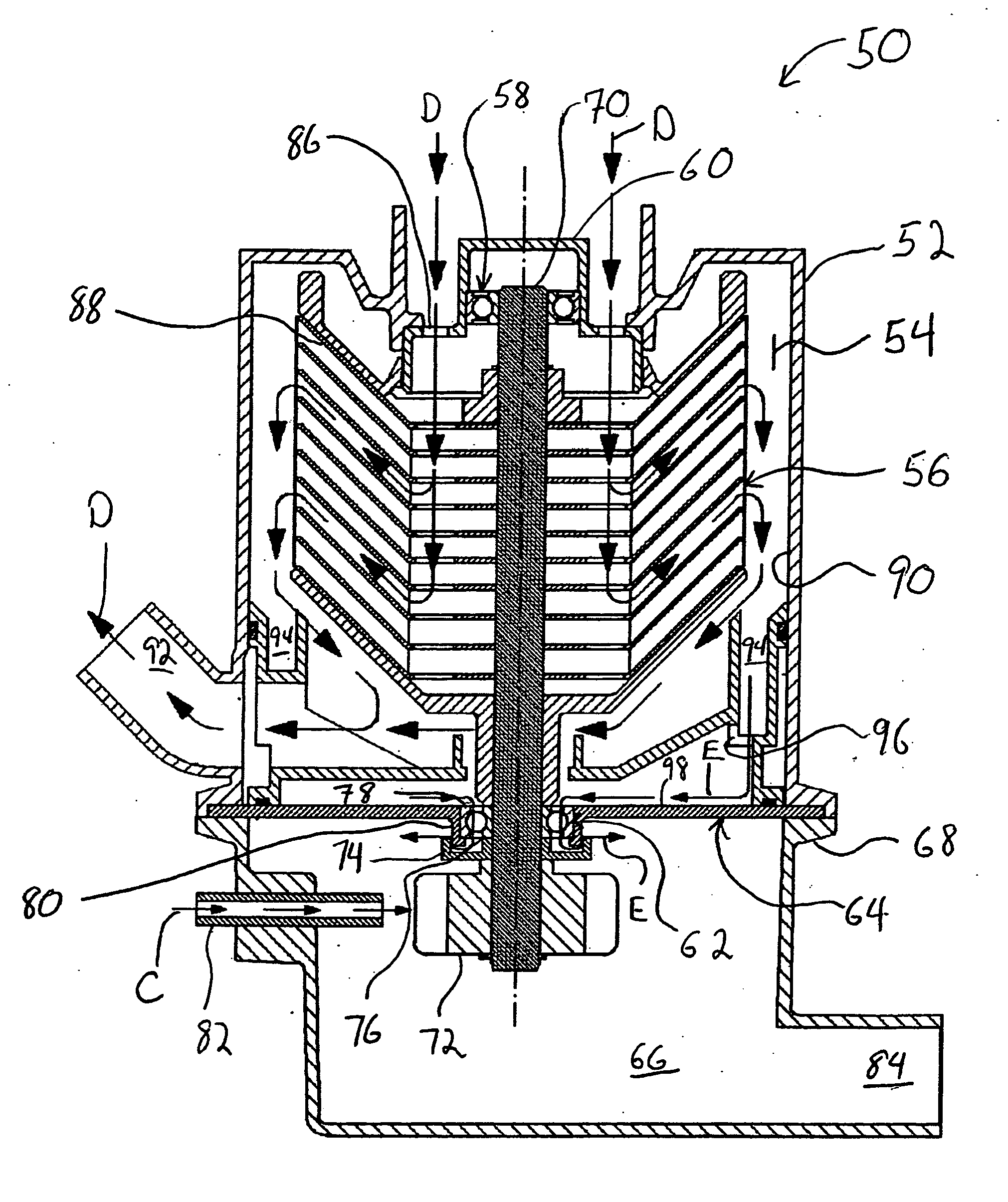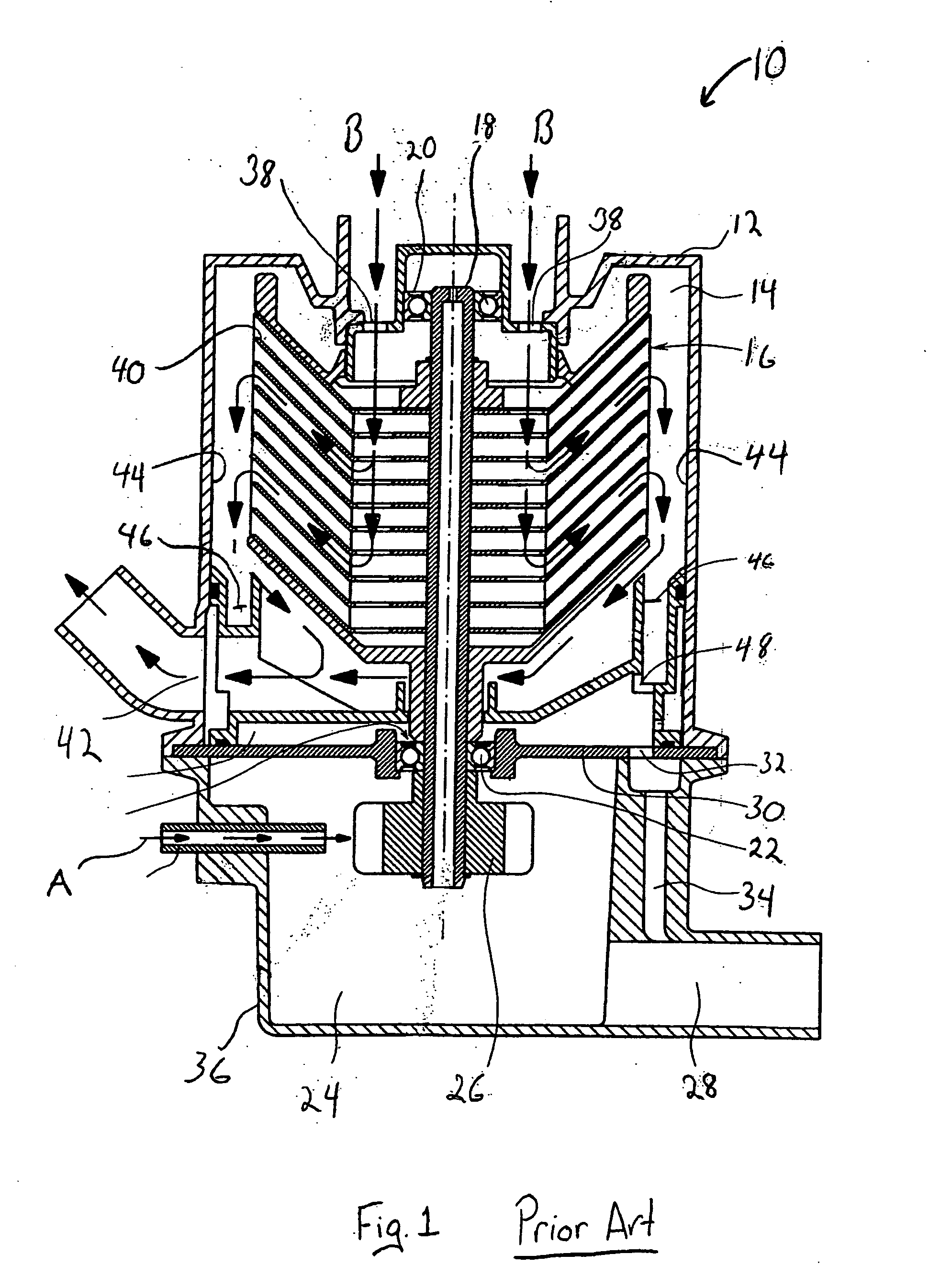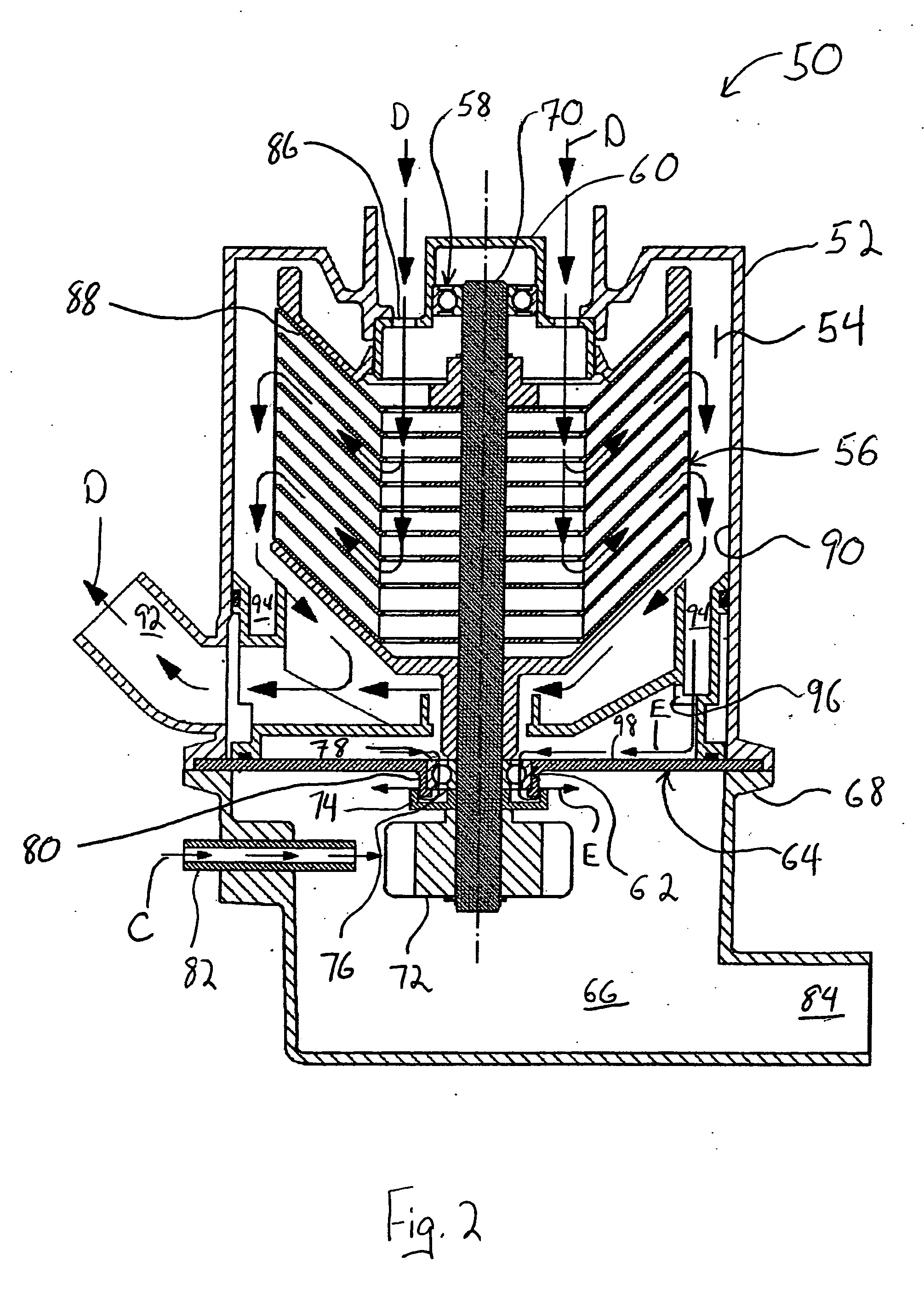Centrifugal separator for cleaning gas generated by an internal combustion engine and a method for operating the same
a technology of centrifugal separator and internal combustion engine, which is applied in the direction of centrifuges, separation processes, auxillary pretreatment, etc., can solve the problems of contaminating the cleaned gas, defeating destroying the purpose of centrifugal separator, so as to achieve the effect of minimizing the potential for oil egress
- Summary
- Abstract
- Description
- Claims
- Application Information
AI Technical Summary
Benefits of technology
Problems solved by technology
Method used
Image
Examples
Embodiment Construction
[0024] As shown in FIG. 2 a centrifugal separator generally designated by the reference number 50 includes a stationary housing 52 that defines an interior separation chamber 54. A centrifugal rotor generally designated by the reference number 56 is rotatably positioned in the separation chamber 54. An upper bearing, 58 is mounted to a bearing housing 60, which in turn is attached to the stationary housing 52. A lower bearing 62 is mounted to a partition wall 64 which delimits the separation chamber 54 from an interior drainage chamber 66 defined by a drainage housing 68. The drainage housing 68 is in turn coupled to the stationary housing 52 at a lower end thereof. A drive shaft 60 forming part of the centrifugal rotor 56 is supported for rotation in the upper and lower bearings, 58 and 62 respectively. A portion of the drive shaft 70 extends through the lower bearing 62 and into the drainage chamber 66.
[0025] A turbine 72 is positioned in the drainage chamber 66 and is mounted fo...
PUM
| Property | Measurement | Unit |
|---|---|---|
| Centrifugal force | aaaaa | aaaaa |
| Flow rate | aaaaa | aaaaa |
| Gravity | aaaaa | aaaaa |
Abstract
Description
Claims
Application Information
 Login to View More
Login to View More - R&D
- Intellectual Property
- Life Sciences
- Materials
- Tech Scout
- Unparalleled Data Quality
- Higher Quality Content
- 60% Fewer Hallucinations
Browse by: Latest US Patents, China's latest patents, Technical Efficacy Thesaurus, Application Domain, Technology Topic, Popular Technical Reports.
© 2025 PatSnap. All rights reserved.Legal|Privacy policy|Modern Slavery Act Transparency Statement|Sitemap|About US| Contact US: help@patsnap.com



